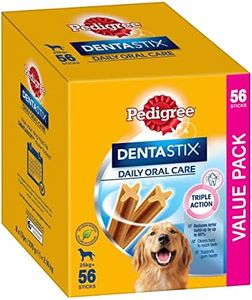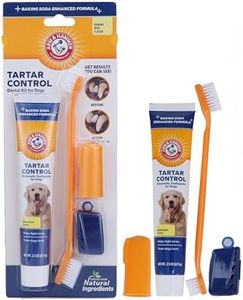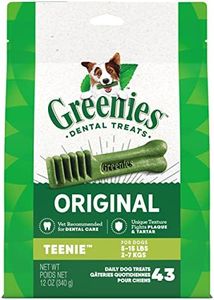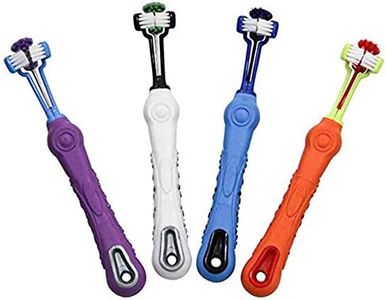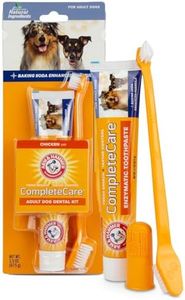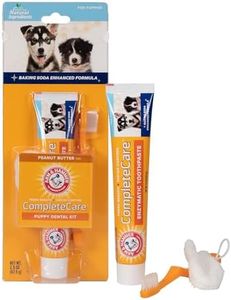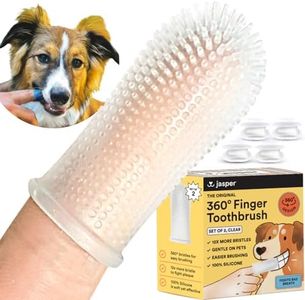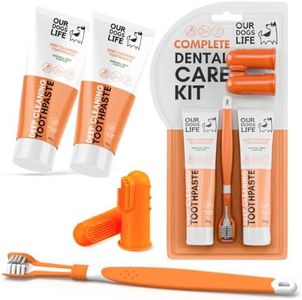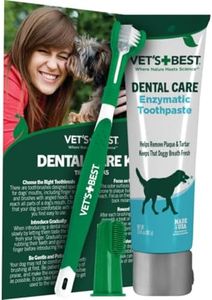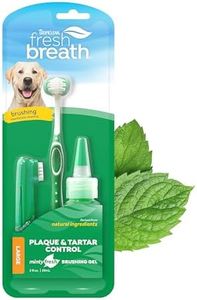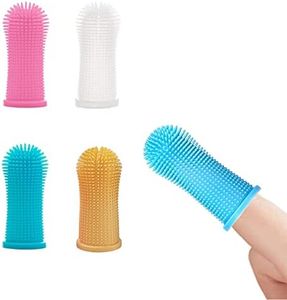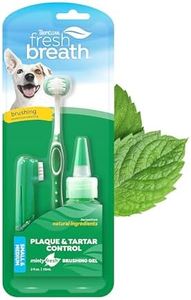We Use CookiesWe use cookies to enhance the security, performance,
functionality and for analytical and promotional activities. By continuing to browse this site you
are agreeing to our privacy policy
10 Best Dog Toothbrushes
From leading brands and best sellers available on the web.Buying Guide for the Best Dog Toothbrushes
Choosing the right dog toothbrush is important for your pet’s oral health. Regular brushing helps prevent plaque buildup, bad breath, and dental diseases. Picking the right toothbrush depends on your dog’s size, temperament, and individual oral care needs. Consider factors like comfort, ease of use, safety, and effectiveness. Your choice should make the brushing experience positive for both you and your dog.Brush Head SizeBrush head size refers to the part of the toothbrush that holds the bristles and gets inserted into your dog's mouth. It's important because a brush head that is too large might not fit comfortably in your dog’s mouth, especially if your dog is small, while one that's too small may not effectively clean teeth in larger dogs. For small breeds or puppies, look for smaller brush heads that can reach tiny teeth and nooks. Medium and large breeds with bigger mouths will need larger brush heads for better coverage. Match the brush head size to your dog’s mouth size for effective and comfortable cleaning.
Bristle Type and SoftnessBristle type and softness describe the feel and flexibility of the bristles that clean your dog’s teeth. This is important as bristles that are too hard may hurt your dog's gums or cause bleeding, while ones that are too soft may not remove plaque effectively. Most pet toothbrushes come with soft or extra-soft bristles, which are gentle on sensitive gums and suitable for most dogs. If your dog has sensitive gums or dental issues, opt for softer bristles. For healthy, sturdy teeth, regular soft bristles should be just fine.
Handle Length and DesignHandle length and design refer to how long the toothbrush’s handle is and how it is shaped for gripping. A longer handle helps you reach the back teeth, especially in bigger dogs, while a shorter handle gives more control and is good for smaller dogs or for those with short snouts. Handles that are easy to grip make brushing more comfortable and prevent slipping. Choose the handle length and design based on your dog’s size and how easily you can maneuver it inside their mouth.
Finger vs. Standard ToothbrushDog toothbrushes come mainly in two styles—finger brushes and standard handled brushes. Finger brushes slip over your finger and let you gently brush your dog’s teeth, giving you more control and making the process less intimidating, especially for puppies or anxious dogs. Standard handled brushes look more like human toothbrushes and are better for reaching back teeth or for larger dogs. Decide which type suits your comfort and your dog’s temperament—finger brushes are great for close control and nervous dogs, while handled brushes are best for thorough cleaning in bigger mouths.
Safety and Material QualitySafety and material quality refer to how safe the toothbrush is for your dog and the quality of the materials used. Since the toothbrush goes into your dog’s mouth, it should be made from non-toxic, BPA-free, and durable materials. Cheap materials can break or shed bristles, which could be swallowed. Always check for signs of wear and replace the toothbrush as needed. Choose a toothbrush from reputable brands or sources to ensure the product meets safety standards and is safe for daily use.
